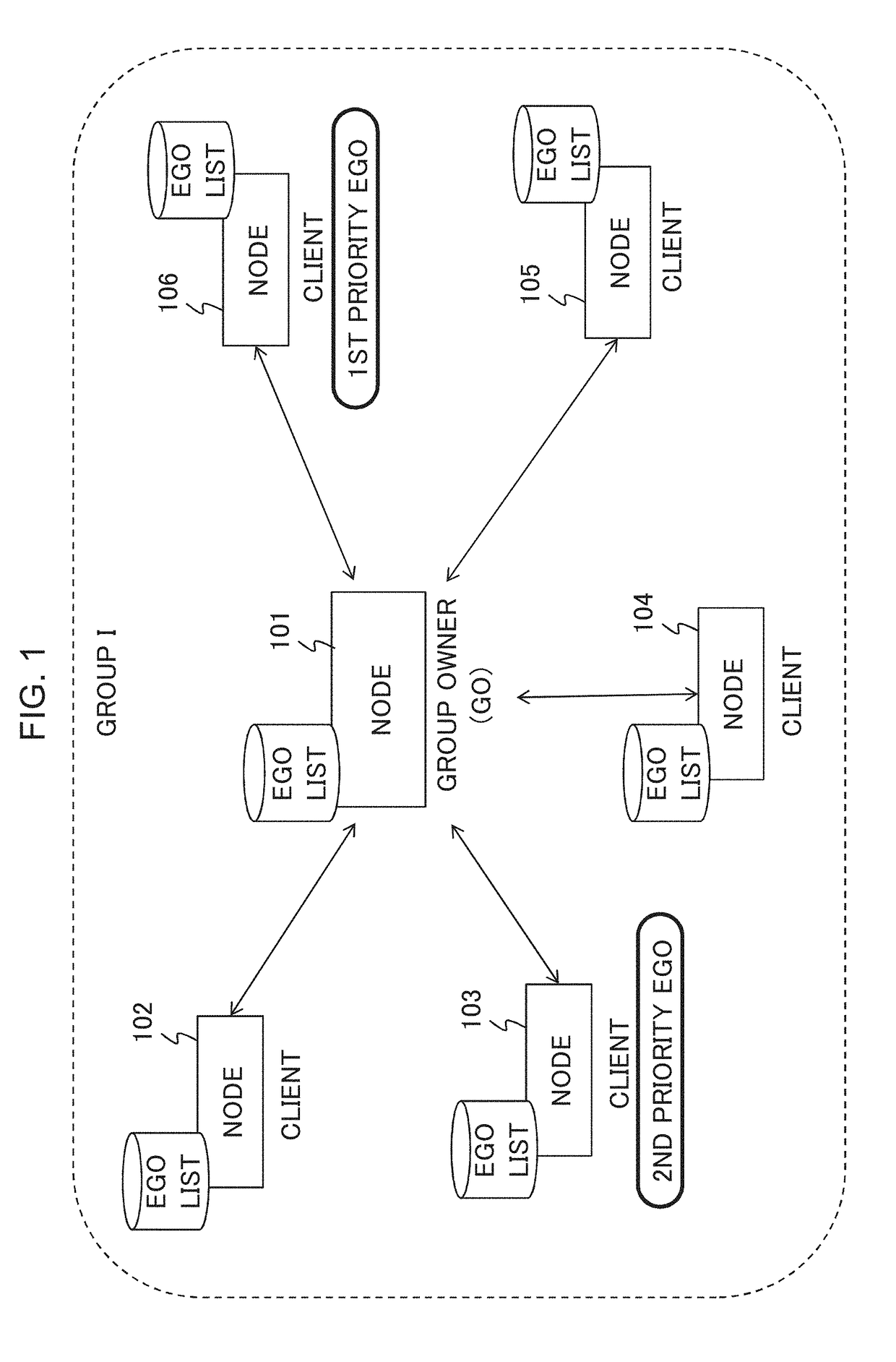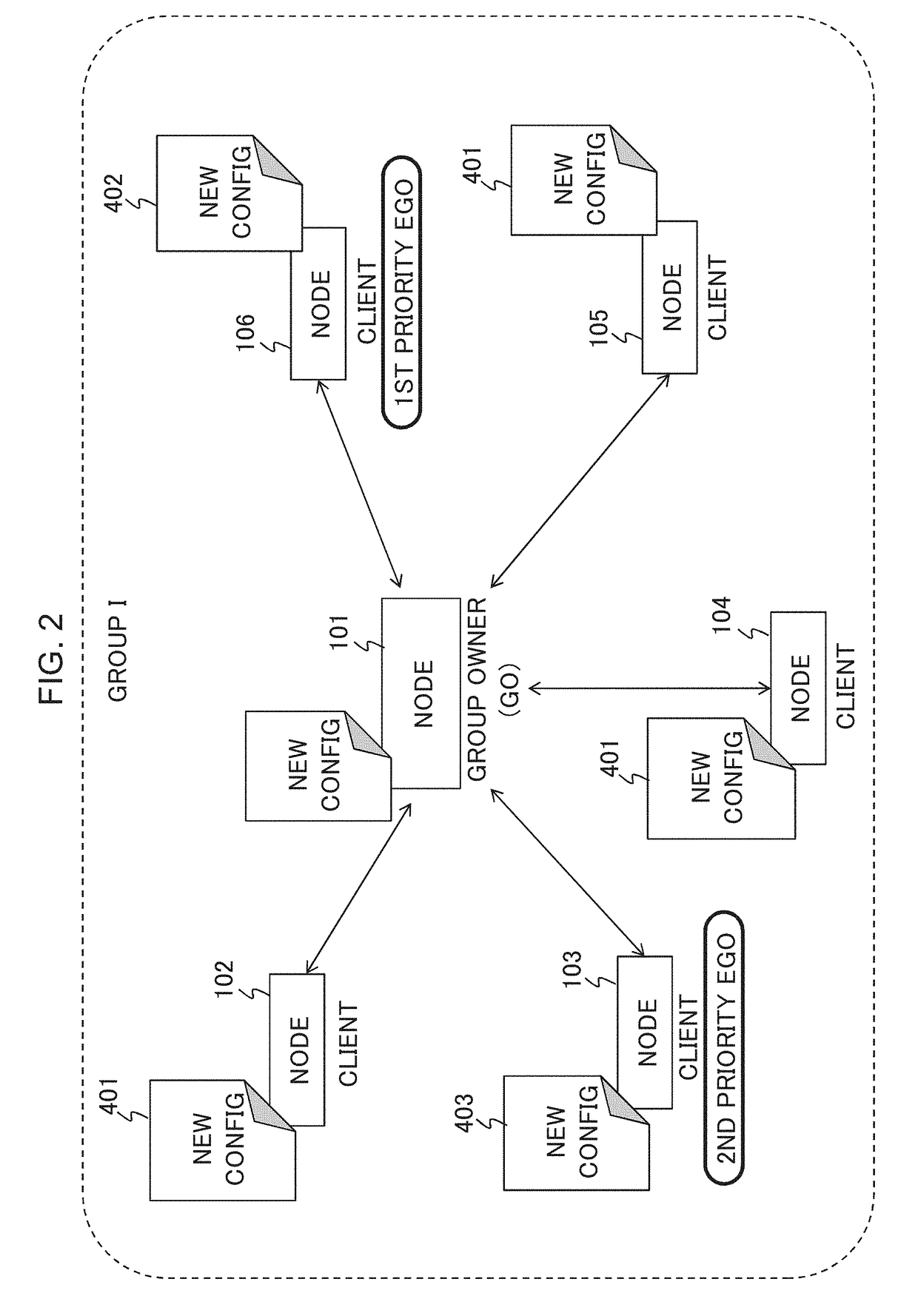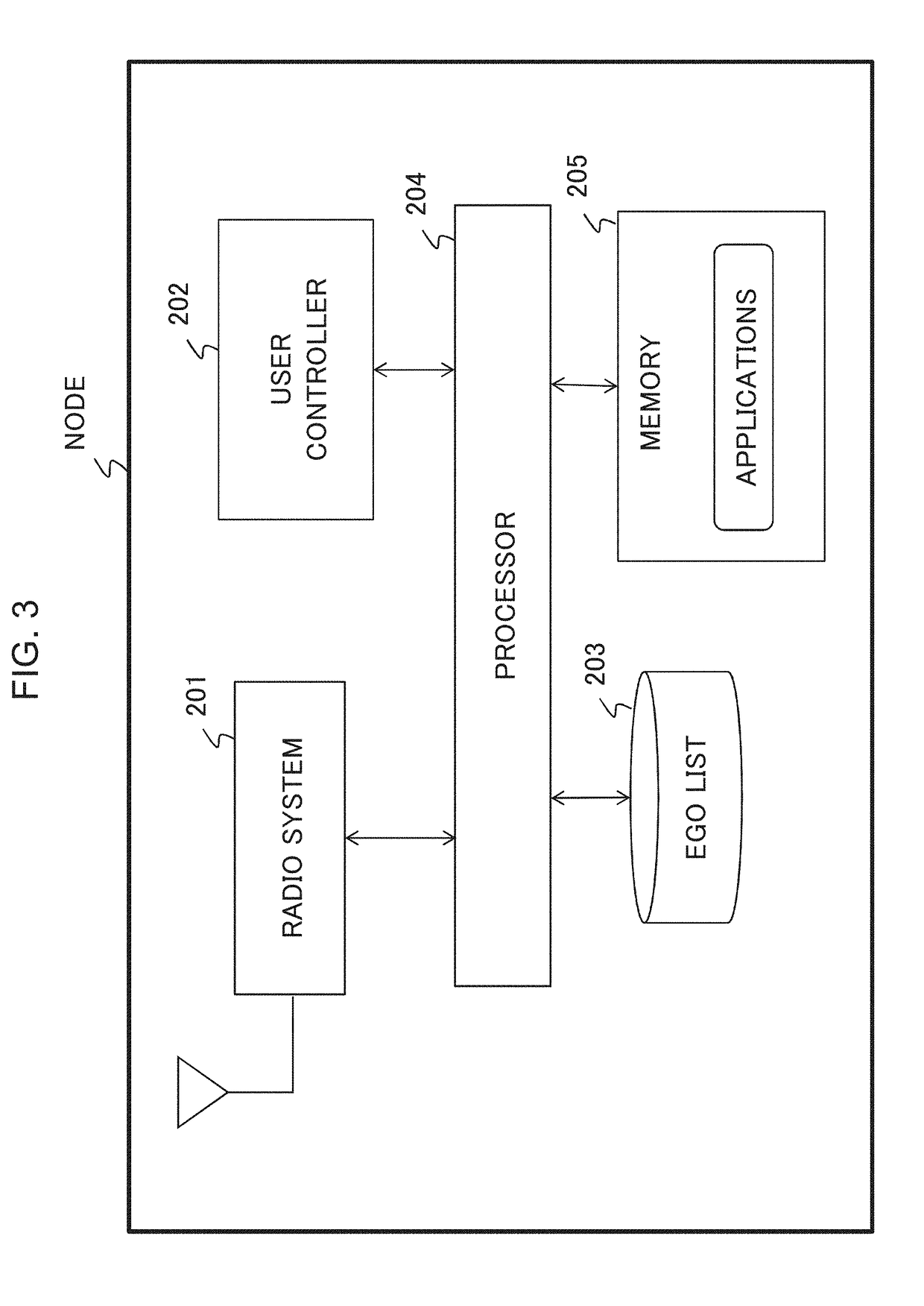Mechanism for quick connection in wireless peer to peer networks
a wireless peer to peer network and wireless peer topology technology, applied in the field of wireless communication systems, can solve the problems of inability to transfer group ownership, unfairness on the part of the go, disruption of group activity, etc., and achieve the effect of facilitating group formation and quick restoration of interconnection
- Summary
- Abstract
- Description
- Claims
- Application Information
AI Technical Summary
Benefits of technology
Problems solved by technology
Method used
Image
Examples
first example
3.1) FIRST EXAMPLE
[0075]Referring to FIG. 16, Node1 and Node2 initially start device discovery (Operation S1201) following the specified mechanism of Wi-Fi P2P by alternately listening on the channels and sending probe request frames. After that, Node1 and Node2 enter GO Negotiation and EGO Selection Phase by exchanging their GO intent, EGO intent and capability credentials for acting as EGO (Operation S1202). By the end of this Operation S1202, one node takes up the role of GO and the other node is assigned the role of client and EGO, subject to fulfilling the above-described requirements. Here, it is assumed that Node2 acts as GO and Node1 acts as Client.
[0076]The GO Node2 periodically broadcasts a beacon including information on GO-Client information (Operation S1203). Configuration of a virtual persistent group is created by Node1 and Node2 (Operations S1204 and S1205). Node3, Node4 and Node5 sends provision discovery frames respectively to Node2 (Operations S1206, S1207 and S12...
second example
3.2) SECOND EXAMPLE
[0078]Alternatively, invitation request may be sent from the client to the 1st EGO after listening to the beacon of 1st EGO as shown in FIG. 17.
[0079]In FIG. 17, all steps are same as described in FIG. 16 excepting the fact that invitation request is sent from the client to the 1st EGO after listening to the beacon of 1st EGO (Operations S1218a, S1220a and S1222a). The 1st EGO then responds to the requesting client with an Invitation Response (Operations S1219a, S1221a and S1222a) and the persistent group is formed.
third example
3.3) THIRD EXAMPLE
[0080]In FIG. 18, operations S1301-S1315 are similar to the operations S1201-S1215 and therefore their details are omitted.
[0081]Referring to FIG. 18, once the GO Node2 leaves the group (Operation S1315), all nodes wait for a timeout period expecting beacon from the 1st priority EGO Node1. In this example, we assume a case where the 1st priority EGO also disappears with the GO. When the timeout occurs due to no beacon received from the 1st priority EGO Node1, the 2nd priority EGO Node3 becomes Autonomous GO and sends invitation requests to Node3, Node4 and Node5 respectively (Operations S1316, S1318 and S1320). These nodes respond to the 2nd priority EGO Node3 with invitation response, respectively (Operations S1317, S1319 and S1321). In this case, the information in another network block of the configuration file about the virtual persistent group with the 2nd priority EGO Node3 as persistent GO as described before is used to form a persistent group using P2P Invi...
PUM
 Login to View More
Login to View More Abstract
Description
Claims
Application Information
 Login to View More
Login to View More - R&D
- Intellectual Property
- Life Sciences
- Materials
- Tech Scout
- Unparalleled Data Quality
- Higher Quality Content
- 60% Fewer Hallucinations
Browse by: Latest US Patents, China's latest patents, Technical Efficacy Thesaurus, Application Domain, Technology Topic, Popular Technical Reports.
© 2025 PatSnap. All rights reserved.Legal|Privacy policy|Modern Slavery Act Transparency Statement|Sitemap|About US| Contact US: help@patsnap.com



